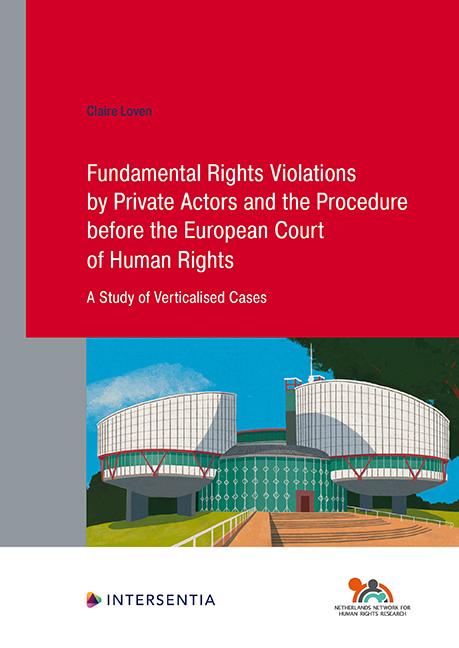Refine listing
Actions for selected content:
8255 results in Intersentia
Chapter 2 - Did the Judgments Project Fail Because No Comprehensive Feasibility Studies Regarding the Convention Type were Prepared?
-
- Book:
- A Hague Convention on Jurisdiction and Judgments
- Published by:
- Intersentia
- Published online:
- 18 September 2025
- Print publication:
- 29 March 2024, pp 27-64
-
- Chapter
- Export citation
Contents
-
- Book:
- A Hague Convention on Jurisdiction and Judgments
- Published by:
- Intersentia
- Published online:
- 18 September 2025
- Print publication:
- 29 March 2024, pp ix-xiv
-
- Chapter
- Export citation
Frontmatter
-
- Book:
- A Hague Convention on Jurisdiction and Judgments
- Published by:
- Intersentia
- Published online:
- 18 September 2025
- Print publication:
- 29 March 2024, pp i-iv
-
- Chapter
- Export citation
List of Legislation and Legal Instruments
-
- Book:
- A Hague Convention on Jurisdiction and Judgments
- Published by:
- Intersentia
- Published online:
- 18 September 2025
- Print publication:
- 29 March 2024, pp xvii-xxii
-
- Chapter
- Export citation
Acknowledgements
-
- Book:
- A Hague Convention on Jurisdiction and Judgments
- Published by:
- Intersentia
- Published online:
- 18 September 2025
- Print publication:
- 29 March 2024, pp vii-viii
-
- Chapter
- Export citation
Chapter 1 - The Choice of the Negotiating Agency: Law Making at the Hague Conference on Private International Law
-
- Book:
- A Hague Convention on Jurisdiction and Judgments
- Published by:
- Intersentia
- Published online:
- 18 September 2025
- Print publication:
- 29 March 2024, pp 17-26
-
- Chapter
- Export citation
Chapter 7 - Did the Judgments Project Fail Because the United States Voiced their Concerns about the Project Too Late in Time?
-
- Book:
- A Hague Convention on Jurisdiction and Judgments
- Published by:
- Intersentia
- Published online:
- 18 September 2025
- Print publication:
- 29 March 2024, pp 167-188
-
- Chapter
- Export citation
Index
-
- Book:
- A Hague Convention on Jurisdiction and Judgments
- Published by:
- Intersentia
- Published online:
- 18 September 2025
- Print publication:
- 29 March 2024, pp 233-247
-
- Chapter
- Export citation
Chapter 8 - Did the Judgments Project Fail Because the Opposition of the European Bloc Towards a True Mixed Convention would have been Impossible to Overcome?
-
- Book:
- A Hague Convention on Jurisdiction and Judgments
- Published by:
- Intersentia
- Published online:
- 18 September 2025
- Print publication:
- 29 March 2024, pp 189-204
-
- Chapter
- Export citation
Introduction: The History of a Hague Judgments Convention
-
- Book:
- A Hague Convention on Jurisdiction and Judgments
- Published by:
- Intersentia
- Published online:
- 18 September 2025
- Print publication:
- 29 March 2024, pp 1-16
-
- Chapter
- Export citation
List of Abbreviations
-
- Book:
- A Hague Convention on Jurisdiction and Judgments
- Published by:
- Intersentia
- Published online:
- 18 September 2025
- Print publication:
- 29 March 2024, pp xxiii-xxvi
-
- Chapter
- Export citation

Fundamental Rights Violations by Private Actors and the Procedure before the European Court of Human Rights
- A Study of Verticalised Cases
-
- Published by:
- Intersentia
- Published online:
- 29 February 2024
- Print publication:
- 01 October 2022

Defragmentation of Law
- Reconstruction of Contemporary Law as a System
-
- Published by:
- Intersentia
- Published online:
- 29 February 2024
- Print publication:
- 30 March 2023

Transitional Justice in Brazil
- Walking the Tightrope
-
- Published by:
- Intersentia
- Published online:
- 29 February 2024
- Print publication:
- 04 May 2023

The African Continental Free Trade Area and the Future of Investor-State Dispute Settlement in Africa
-
- Published by:
- Intersentia
- Published online:
- 29 February 2024
- Print publication:
- 03 April 2023

The European Convention on Human Rights and its Impact on National Private Law
- A Comparative Perspective
-
- Published by:
- Intersentia
- Published online:
- 29 February 2024
- Print publication:
- 01 June 2023

Discrimination in Online Platforms
- A Comparative Law Approach to Design, Intermediation and Data Challenges
-
- Published by:
- Intersentia
- Published online:
- 29 February 2024
- Print publication:
- 01 October 2022

Towards a New European Impetus Post-Brexit
- A View behind the Scenes
-
- Published by:
- Intersentia
- Published online:
- 29 February 2024
- Print publication:
- 20 March 2023
Index
-
- Book:
- National Human Rights Institutions in Europe and Latin America
- Published by:
- Intersentia
- Published online:
- 17 September 2025
- Print publication:
- 19 February 2024, pp 315-318
-
- Chapter
- Export citation
Instituto Nacional de Derechos Humanos (Chile)
-
-
- Book:
- National Human Rights Institutions in Europe and Latin America
- Published by:
- Intersentia
- Published online:
- 17 September 2025
- Print publication:
- 19 February 2024, pp 279-306
-
- Chapter
- Export citation
